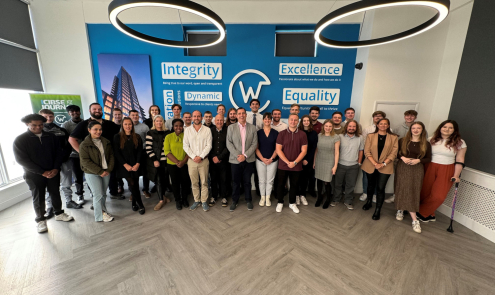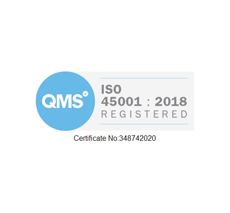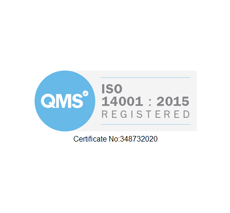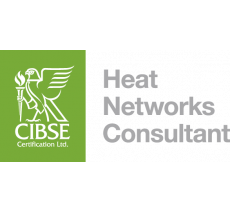Understanding Thermal Insulation Standards & Energy Efficiency
14 Nov 2024
Energy efficiency is increasingly at the forefront of modern building design, driven by both environmental concerns and the need for cost savings. One of the most effective ways to improve a building’s energy efficiency is through high-performance thermal insulation.
Updated thermal insulation standards, including the targets set by the upcoming Future Homes Standard in 2025, play a crucial role in optimising energy usage, reducing heat loss, and enhancing the overall sustainability of buildings.
According to the National Insulation Association, solid-wall buildings can lose as much as 45% of their heat through the walls. By adhering to thermal insulation standards, builders and designers can help to reduce this major financial burden.
What Are The Thermal Insulation Standards?
Thermal insulation standards set the required benchmarks for insulation materials, thickness, and installation practices, ensuring that buildings are properly insulated against heat loss or gain.
These standards are established through building codes and regulations to ensure compliance with safety, energy efficiency, and performance goals. In the UK, standards such as Part L of the Building Regulations mandate insulation values like R-value and U-value, which measure thermal resistance and heat transfer, respectively.
The Future Homes Standard, set to be implemented in the UK by 2025, will enforce even stricter requirements, aiming to ensure that all new homes produce 75-80% less carbon emissions than those built to current standards.
As builders and developers prepare for these regulations, meeting updated thermal insulation standards will be a crucial step toward compliance and energy-efficient design.
Key Updates to UK Insulation Standards
In response to evolving environmental and efficiency targets, insulation standards have seen significant updates in recent years. Changes to Part L building standards focused on stricter R-value and U-value requirements to optimise thermal performance and minimise energy consumption across various climate zones.
As of June 2022, the following U-value targets were established for new domestic buildings:
- Walls: Maximum U-value of 0.18 W/m²K, remaining on pair with the previous value
- Roofs: Maximum U-value of 0.11 W/m²K, down from the earlier 0.13 W/m²K
- Floors: Maximum U-value of 0.13 W/m²K, down from the prior 0.18 W/m²K
These updates are particularly relevant as the UK moves towards net-zero carbon emissions by 2050. For instance, insulation thickness requirements have increased in certain building envelopes to enhance heat retention, while materials must now meet stringent thermal conductivity benchmarks.
Ensure compliance and energy efficiency in your project with Whitecode’s sustainability consultancy service.
How Do Insulation Standards Help Improve Energy Efficiency?
Thermal insulation standards directly impact energy efficiency by reducing the heating and cooling demands of a building. Proper insulation minimises heat transfer, helping to maintain a stable indoor temperature and easing the load on HVAC systems. High R-value insulation materials, such as fibreglass and foam, offer enhanced thermal resistance, while optimised U-values ensure minimal heat loss.
What are the benefits for builders and developers?
For builders and developers, adhering to insulation standards offers several advantages beyond energy efficiency. First, compliant buildings often qualify for sustainability certifications, such as BREEAM, which can increase a property’s value and market appeal.
Additionally, insulated buildings typically have lower maintenance costs, as proper thermal insulation helps reduce wear and tear on HVAC systems. With building regulations placing a stronger emphasis on compliance, following insulation standards ensures that projects are future-proof and meet anticipated regulatory demands.
Practical Considerations for Meeting Standards
Meeting thermal insulation standards requires careful planning and selection of high-quality materials. Builders should consider certified insulation types, including fibreglass, foam, and cellulose, each of which offers unique benefits depending on the building's requirements.
Factors such as insulation thickness and conductivity play a critical role, particularly in colder climate zones where thermal resistance is essential. Calculating the appropriate R-value for a building’s specific needs and ensuring insulation thickness align with building envelope requirements are vital steps in achieving compliance.
Preparing for the 2025 Future Homes Standard
The Future Homes Standard represents a significant step forward in the UK’s drive toward a low-carbon future. From 2025, all new homes will need to adhere to this standard, which mandates a 75-80% reduction in carbon emissions compared to homes built under the current Building Regulations.
Achieving these targets will require developers to go beyond traditional insulation methods, incorporating high-performance insulation materials with improved R-values and lower U-values to minimise heat loss.
In Conclusion
Thermal insulation standards play an essential role in designing energy-efficient, sustainable buildings. By implementing these standards, builders and developers contribute to a reduced carbon footprint, lower operational costs, and improved building performance.
With increasingly stringent regulations, prioritising compliance with insulation standards is crucial not only for the environment but also for the long-term viability of any building project. For developers, architects, and contractors, meeting these standards represents an investment in a sustainable and energy-efficient future.
Looking to ensure your next project meets the latest insulation standards? Whitecode Building Services Consultants offers expert guidance and comprehensive design solutions to help you navigate complex regulations and achieve optimal energy efficiency. Get in touch today to learn more.

Whitecode Consulting Shortlisted for CIBSE...
As a company that prides itself on delivering outstanding sustainability and buildability for its clients, Whitecode Consulting is delighted to announce it has been shortlisted for the prestigious CIBSE Building Performance...
Read More
IS THE TRANSITION TO HEAT PUMPS WORTH THE...
As we contend with the global need to reduce carbon emissions and combat climate change, the UK government is introducing bold initiatives to transition away from fossil fuels. One such initiative is the ban on new gas boilers,...
Read MoreLike to Know More? Let's Talk...







